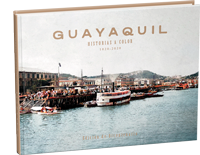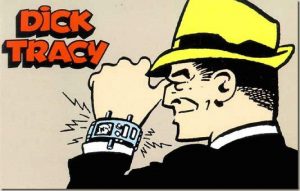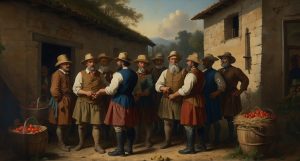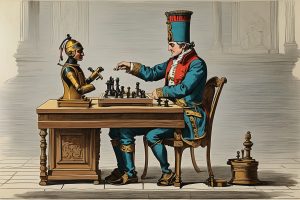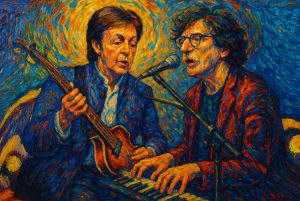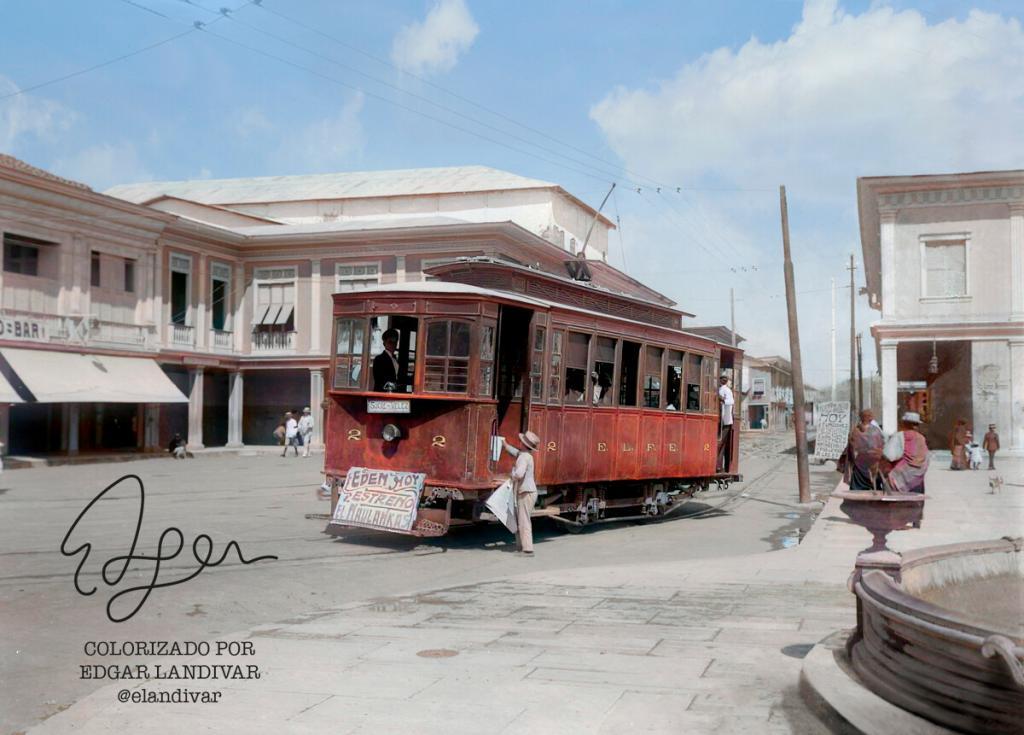
Author: Vicente Adum Gilbert, June 11, 2020
I have had this image in my digital collection of high resolution historical photographs for some time now (Figure #1), but had never bothered to examine it carefully, until Édgar Landívar tagged me in a tweet posting this same image , but digitally restored and colored by means of an artificial intelligence algorithm (Figure #2). In that same tweet, Edgar openly inquired about the location where the photo had been taken.
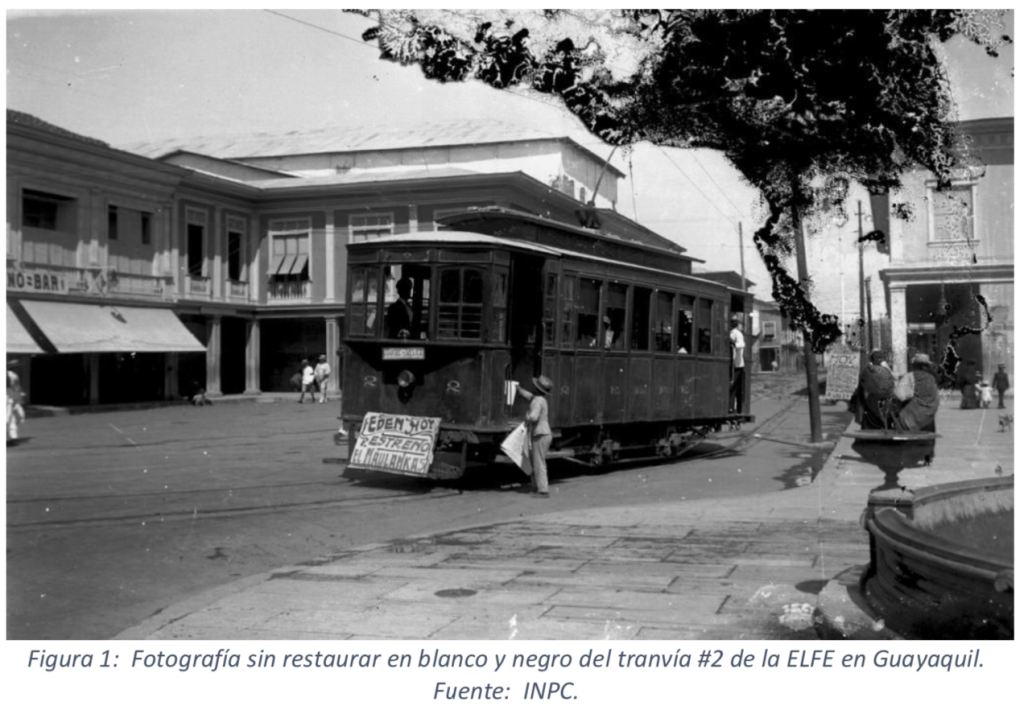
My collection of historical photographs focuses mainly on four themes: Ferrocarriles del Ecuador, Tranvías de Guayaquil, Baños del Salado and Old Guayaquil. So, in order to determine the exact location of the photograph, I did a quick review of several old images of Plaza Rocafuerte (better known today as Plaza San Francisco), since I had the impression that the photograph corresponded to that area . After this review there was no doubt: the photograph had been taken in Vélez and Pedro Carbo. In the foreground, the tram is stopped on Vélez Street, and the camera is pointing to the west of the City.
The tram that appears in the photo is number 2 of the Empresa de Luz y Fuerza Eléctrica (ELFE), a company that had been established in 1904 in order to provide public lighting for Guayaquil, and that in 1910 inaugurated the service of electric trams in the city. On tram number 2, which was manufactured in Belgium, a sign specifying the route it was following can be clearly read: “SUCRE-VÉLEZ”. The driver notices the presence of the photographer and looks directly at the camera with a certain air of surprise (Figure 4), while one of the passengers looks at the camera
with curiosity. A boy with a toast-type hat, but no shoes, approaches the front door to sell newspapers, while another passenger embarks through the back door. As a curious fact, the ELFE would be bought in 1924 by American capitalists (The Electric Bond & Share Company) to turn it into the remembered Electric Company of Ecuador, whose initials gave rise to the name of the second most popular soccer team in Guayaquil: Club Sport Emelech.
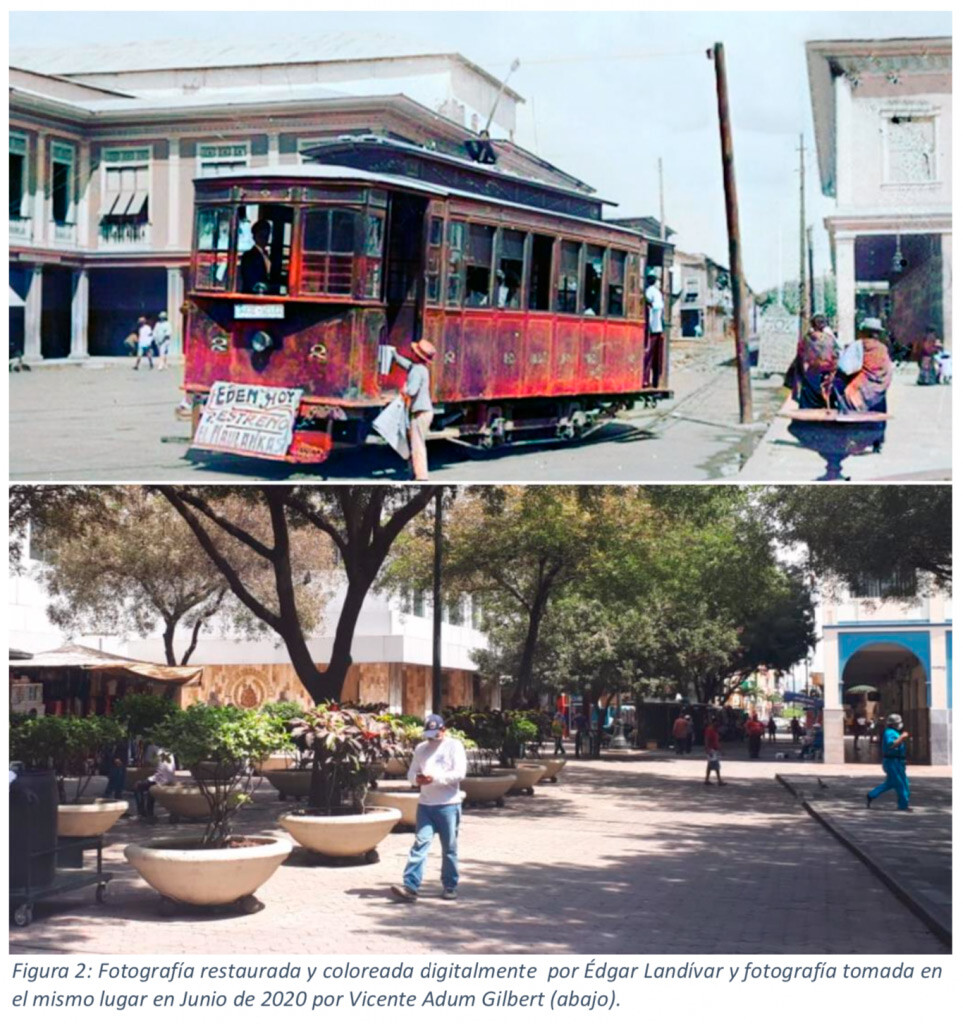
On the front grill of the tram there is a poster for the Eden theater announcing the premiere of "El Naulahkas", which undoubtedly refers to the 1918 American silent film "The Naulahka", directed by George Fitzmaurice and based on a book of the same name. by the English writer Rudyard Kipling (Figure 3). On the north sidewalk of Vélez Street, there is an advertisement for the Olmedo Theater that advertised two performances of The Leotrop Brothers for that day; the first in the afternoon, at 3:30 PM, and the second in the evening, at 8:00 PM. At that time, the Olmedo theater was located on Luque Street, between Chile and Pedro Carbo.
A detail that can only be seen in the original photographic plate or in the high resolution image is that in the building that forms a corner and that is behind the tram, you can see a small sign in which they are distinguished, not without a certain difficulty, the words "CHARITABLE LOTTERY". The modern building of the Junta de Beneficencia de Guayaquil is currently located in that same place.
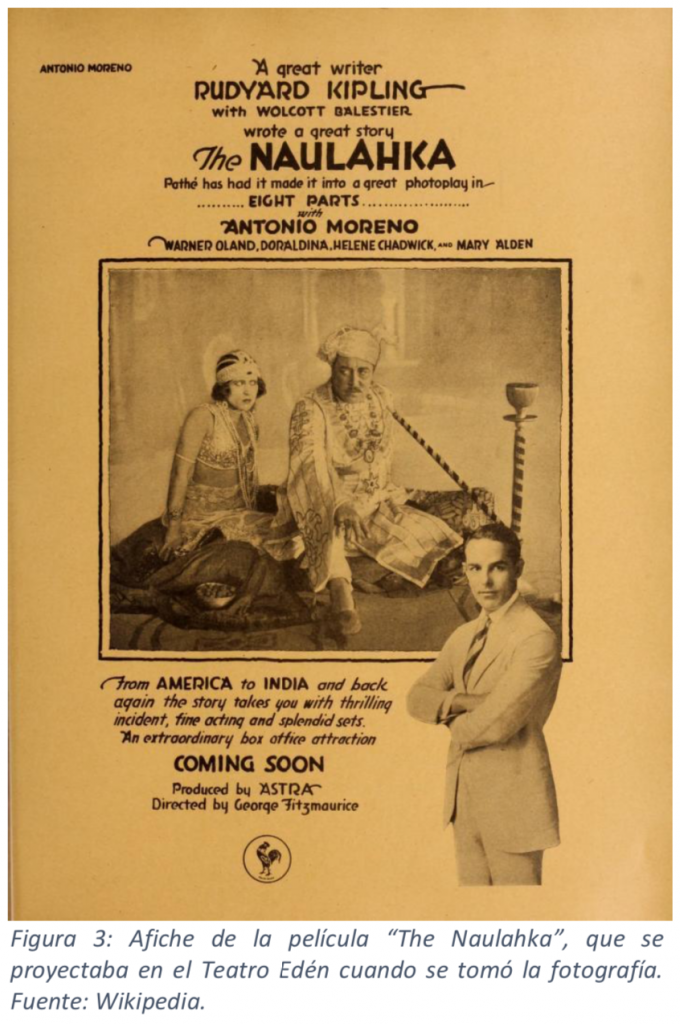
At present, this section of Vélez Street is closed to traffic (between Pedro Carbo and Chile) and this space has been incorporated into Plaza Rocafuerte, just as it had been until before the great fire of 1896. In that place, Adjacent to the church of San Francisco, was the building of the Salamandra Company that, after it was completely burned in October 1896, would be relocated to the east of Plaza Rocafuerte (where it is located until today), leaving free space for extend Vélez street to Pedro Carbo.
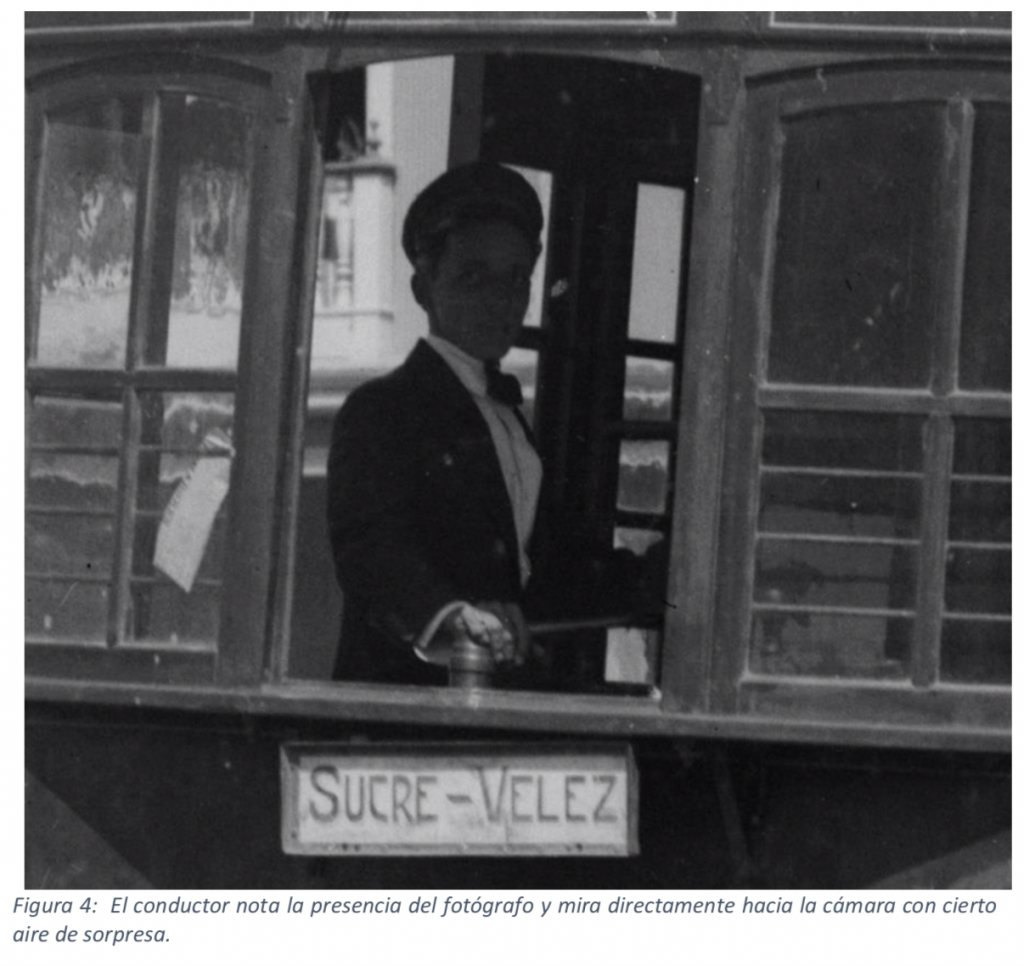
The fountain that appears in the lower right corner of the photograph was one of the two in the Plaza Rocafuerte. These fountains were removed from the Plaza and are currently located on the Malecón 2000; one of them between Tomás Martínez and Imbabura, and the other at Junín. An obvious change is that the four chalices that adorned each of these fountains in Plaza Rocafuerte are no longer present in their new location.
Towards the end of Velez Street, to the west, you can see a hill in the old photo. It is the silhouette of Cerro San Eduardo. At present, it is difficult to distinguish said hill from the intersection of Vélez and Pedro Carbo, due to the presence of obstacles such as buildings, cables, trees, among others. However, when walking one block to the west through Vélez, that is, up to Chile Street, it is possible to see the hill without much difficulty.
Regarding the year the photo was taken, it is necessary to mention that it appeared for the first time in the book "América Libre Guayaquil en 1920", published that same year by the company Prensa Ecuatoriana, directed by Carlos Manuel Noboa. On the other hand, the film El Naulahkas was filmed in 1918, so, in the opinion of the author of this article, this photo would have been taken between 1919 and 1920. A quick search in a newspaper library could even allow determining the exact month in that this photograph was taken, however, as of the date this article is written, newspaper libraries and libraries are closed due to the health emergency caused by Covid-19.
References:
- Noboa, Carlos Manuel; America Libre Guayaquil in 1920; Ecuadorian Press Journalistic Company; Guayaquil; 1920.
- Estrada Ycaza, Julio; Historical Guide of Guayaquil, Volume 3; Guayaquil; 2000.
- Morrison, Allen; The Tranvías de Guayaquil (http://www.tramz.com/ec/g/gs.html); 2008.
- Wikipedia contributors; The Naulahka (Film)
- (https://en.wikipedia.org/wiki/The_Naulahka_(film)); 2020.
- Estrada Ycaza, Julio; Guayaquil Historical Guide, Volume 5; Guayaquil; 2008.
- Hoyos, Melvin; Avilés Efrén; The Plans of Guayaquil Two Centuries of Urban Evolution 1740–1960; Guayaquil; 2010.

